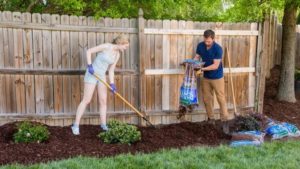Most Realtors (92%) recommend that sellers improve curb appeal before selling their home. The largest percentage of Realtors (r), suggested that sellers improve the curb appeal of their home before listing it for sale. These were also the most popular projects for which landscape professionals have seen increased demand in the past year. These and other findings are based on a report by the National Association of Realtors and National Association of Landscape Professionals.
Many homeowners have made their backyards their own, creating oases filled with plants, trees, and pools. If the homeowner wants to sell, these outdoor features can be embraced by him or her.
Landscape professionals were most in demand for outdoor projects such as an overall landscape update (61%), maintenance (58%), and a new patio (55%). They saw less demand for a wood deck (15%) or an in-ground swimming pool (25%) as well as tree care (29%).
It is not surprising that most Realtors (r/) and homeowners place high importance on a yard’s curb appeal. Green spaces and healthy outdoor living can improve the quality of life, enhance home value, make communities more attractive, and help people’s mental as well as physical health.
Read More On How Improving Curb Appeal Can Benefit You when Selling: https://realtytimes.com/real-industry-news-articles/item/1046660-most-realtors-recommend-improving-curb-appeal-and-homeowners-can-benefit-financially-and-emotionally-by-remodeling-outdoor-features-nar-nalp-report-finds?rtmpage=


